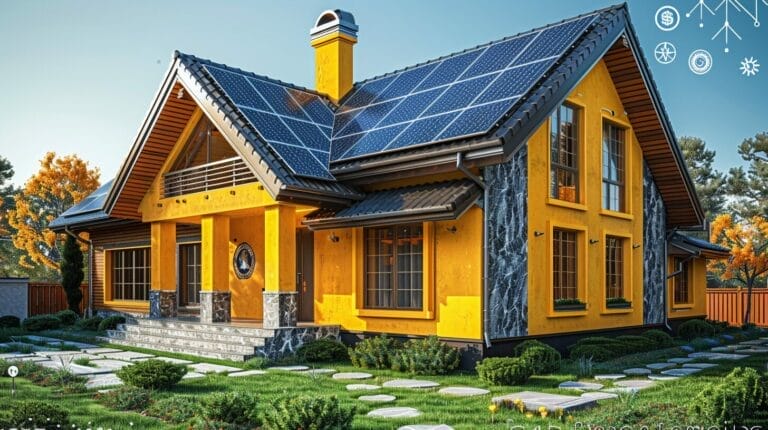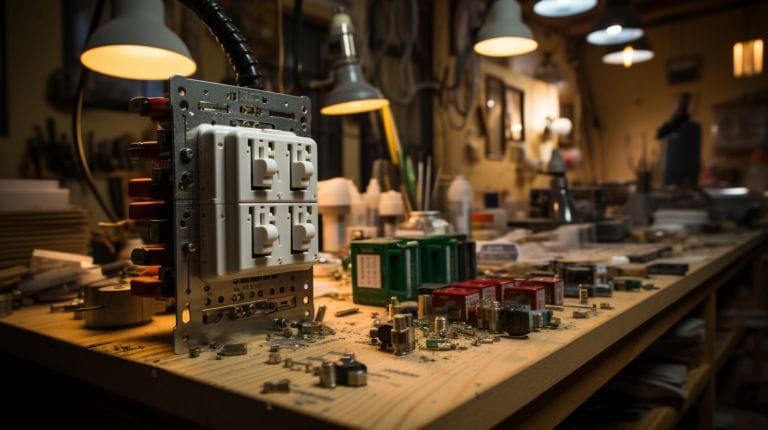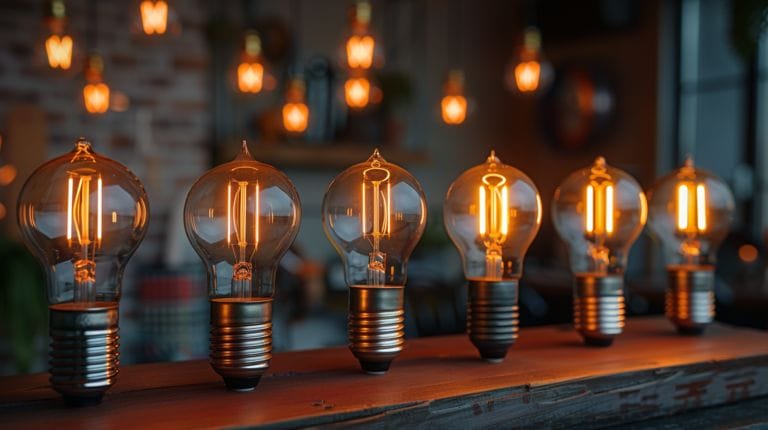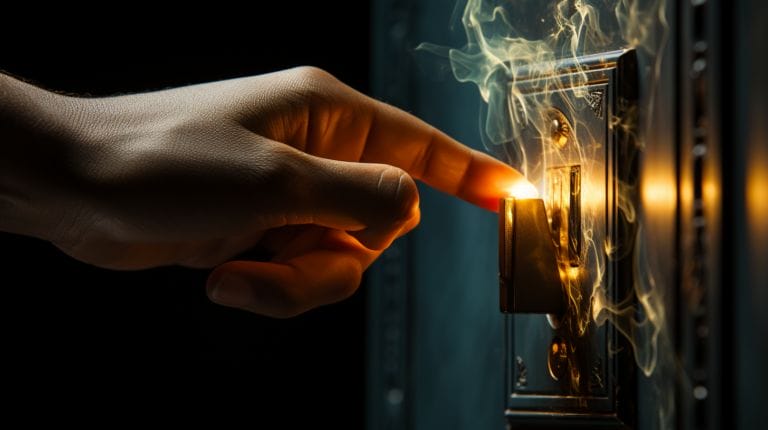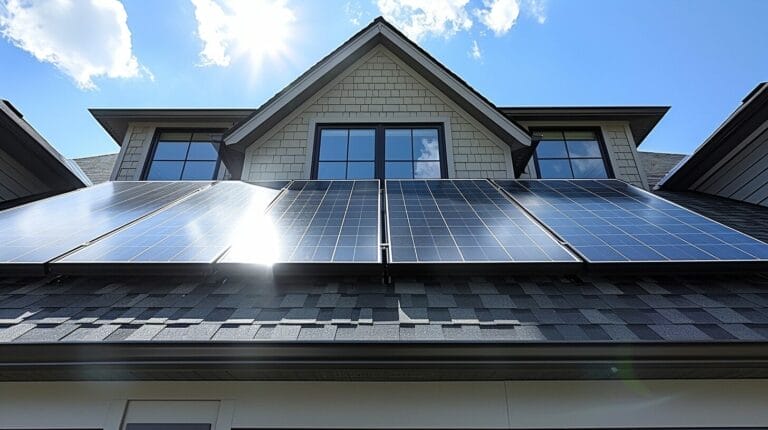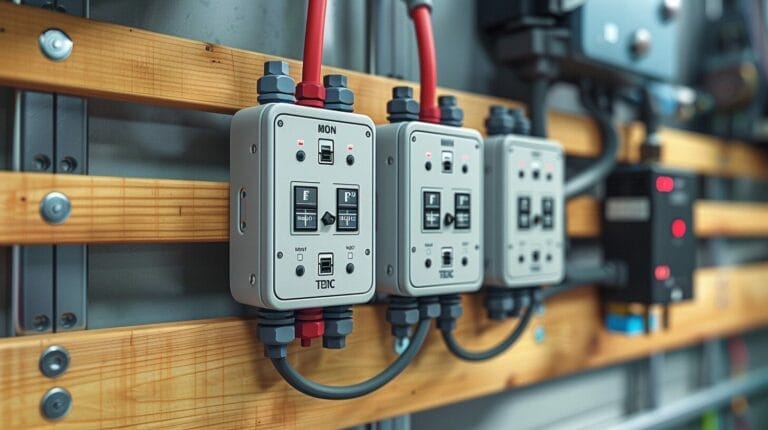Halogen Light Color: Understanding the Warmth and Brightness
When we talk about halogen light color, we focus on the unique combination of warmth and brightness that these bulbs offer. With color temperatures typically ranging between 2700K and 3000K, halogen lights create a cozy, inviting atmosphere while ensuring high color accuracy. But how exactly do they achieve this balance, and what makes them stand out compared to other lighting options like LEDs?
By exploring the intricacies of halogen light technology and its applications, we can better understand why these lights are chosen for specific environments. Let’s examine how halogen lights manage to excel in both residential and commercial settings.
Key Takeaways
- Halogen lights typically have a color temperature between 2700K and 3000K, providing a warm light spectrum.
- They offer clear, bright illumination ideal for various settings including residential and commercial spaces.
- The tungsten filament and halogen gas combination ensures consistent light output and aids in redepositing evaporated tungsten.
- Halogen lights are preferred for their accurate color perception, making them suitable for environments requiring precise color rendering.
- They enhance the appearance of products in retail stores and provide focused illumination in offices.
Understanding Halogen Light Technology and Its Color Properties

Halogen lights, an advancement over traditional incandescent bulbs, utilize a tungsten filament enclosed in a small quartz capsule filled with halogen gas. This superior design delivers a more efficient and brighter light source than standard incandescents. The halogen gas helps redeposit evaporated tungsten back onto the filament, prolonging its lifespan and maintaining consistent brightness.
The color temperature of halogen lights ranges typically between 2700K and 3000K, placing them in the warm light spectrum, akin to incandescent bulbs. Yet, halogen lights offer refined and crisp illumination, ideal for applications where clear, bright light is crucial, making them a popular choice in both residential and commercial settings.
By understanding the color properties of halogen lights we can appreciate their versatility. Adjusting the color temperature allows us to create varying atmospheres. A lower color temperature around 2700K emits a cozy, warm light, while a higher temperature around 3000K provides a slightly cooler, yet still inviting brightness. This flexibility makes halogen lights a superior choice for anyone seeking to elevate their lighting environment.
Comparing Halogen Light to LED Light: A Comprehensive Comparison

A comparison of halogen lights with LED lights helps us understand which lighting solution best suits our needs. Halogen bulbs are known for their warm, natural light that enhances color perception, making them a preferred choice for settings where accurate color rendering is essential.
However, when it comes to energy efficiency and lifespan, LEDs hold a clear advantage. LEDs consume significantly less energy than halogen bulbs, making them more eco-friendly and cost-effective in the long run. They also have a much longer lifespan, often lasting up to 25 times longer than halogen bulbs, which means fewer replacements and less waste, aligning with principles of sustainable living.
While some might argue that LEDs occasionally lack the warmth of halogen light, ongoing advancements in LED technology continually enhance their color rendering capabilities.
Choosing the Right Halogen Lamp for Your Lighting Needs

When selecting the right halogen lamp, understanding the information on bulb packaging is crucial. This knowledge allows us to make informed decisions that enhance our spaces while ensuring efficiency and longevity. Here are some key considerations:
- Energy efficiency: Halogen lamps are more energy-efficient than traditional incandescent bulbs. Check the lumens per watt ratio to gauge efficiency.
- Dimmability: Not all halogen bulbs are dimmable. If you require adjustable brightness, look for this feature on the packaging.
- Durability: Quality matters. Opt for bulbs with a longer lifespan to avoid frequent replacements.
- Fixture compatibility: Ensure the bulb fits your specific light fixtures. Packaging often specifies the type of fixture it’s designed for.
- Light quality: Halogen lamps produce high-quality, warm light. Compare the color temperature (measured in Kelvins) to match your desired ambiance.
The Application of Halogen Light in Various Settings

Understanding the technical aspects of halogen lamps is important, but we should also consider how these lights perform in various settings. Residential spaces, for instance, can benefit from the range of color temperatures typically between 2700K and 3000K. This warmth is ideal for creating cozy, inviting atmospheres in living rooms, bedrooms, and kitchens. The brightness and color rendering capabilities make halogen lights perfect for task lighting, ensuring fine details are clearly visible.
In commercial spaces, halogen light excels due to its high brightness and excellent color accuracy. Retail stores, for instance, can enhance the appearance of products using halogen lighting, making colors pop and textures more noticeable. Offices and workspaces also use halogen lamps to provide clear, focused light that reduces eye strain and boosts productivity.
Beyond traditional uses, halogen lamps have special applications. In areas requiring ultraviolet or infrared light, halogen lamps are invaluable. They’re used in medical equipment, scientific research, and even in some industrial processes.
Replacement and Maintenance of Halogen Bulbs

Timely bulb replacement is key to maintaining ideal lighting conditions. Always have spare bulbs on hand to replace any that burn out. Here’s how you can manage your halogen lighting systems effectively:
- Replace promptly: Once a bulb starts flickering or dims noticeably, replace it to ensure consistent lighting quality.
- Handle safely: Always turn off the power and let the bulb cool down before handling it to avoid burns or electrical hazards.
- Maintenance schedule: Regularly clean fixtures and bulbs to prevent dust buildup, which can reduce brightness and efficiency.
- Avoid touching the glass: Oils from our skin can shorten the bulb’s lifespan. Use a cloth or gloves when installing new bulbs.
- Check compatibility: Ensure replacement bulbs are compatible with existing fixtures to avoid damage and ensure efficient operation.
Conclusion
To sum up, we’ve delved into the unique warmth and brightness that halogen lights bring to various settings. Their ability to enhance color accuracy makes them essential across residential, commercial, and specialized applications.
While newer technologies like LEDs offer their own benefits, halogen lights still maintain their position with their inviting ambiance and clear illumination. By understanding their properties and proper maintenance, we can guarantee our spaces are well-lit and welcoming with the right halogen lamps.
Frequently Asked Questions
What is the difference between halogen and incandescent light bulbs?
Halogen light bulbs are an improved version of incandescent bulbs. They contain a small amount of halogen gas, which increases their efficiency and lifespan, providing a brighter light output compared to traditional incandescent bulbs.
How do halogen light fixtures compare to LED bulbs?
Halogen light fixtures are typically less energy-efficient than LED bulbs but offer a similar warm light quality. LEDs last much longer and use significantly less energy, making them a more cost-effective and environmentally friendly option over time.
What is the significance of the color temperature, such as 3000K or 2700K, in halogen light bulbs?
The color temperature indicates the warmth or coolness of the light. Lower numbers like 2700K represent warm, yellowish light, creating a cozy atmosphere. Higher numbers like 3000K indicate a cooler, more bluish light, which is often preferred for task lighting and modern aesthetics.
Can I use a dimmer with halogen light bulbs?
Yes, halogen bulbs are compatible with dimmer switches, allowing you to adjust the brightness levels according to your preference. This feature adds versatility and helps in creating different ambiances in a room.
How much ultraviolet light do halogen bulbs emit?
Halogen bulbs emit a very low amount of ultraviolet light, making them safe for use in home environments. However, they do emit more UV light compared to LEDs, so it’s important to consider the application and duration of exposure.


